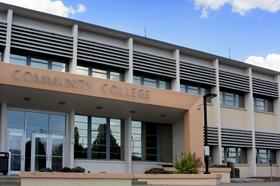A number of community college students from around the country are headed to NASA to help design robotic rovers for Mars exploration. The 92 students chosen for the project were carefully selected after participating in interactive online assignments throughout the school year. They will be headed to a NASA center this spring to complete their tasks. The National Community College Aerospace Scholar program designed the project, with sponsorship from NASA, and will include students from 24 different states across the country.
This video discusses the NASA Community College Aerospace Scholars program.
The Purpose of the Program
According to a press release on the NASA website, the program is based on the Texas Aerospace Scholars program, which was originally created as a partnership between the state’s education community and NASA. The purpose was to get more students excited about STEM areas of study, particularly science and engineering. This particular project, through the National Community College Aerospace Scholar program and NASA, is designed to offer hands-on opportunities in STEM fields that will inspire more students to enter those fields after they finish college.
“I am so proud of the Community College Aerospace Scholars program,” Leland Melvin, NASA’s associate administrator for education, stated in the press release. “Community colleges offer NASA a great pool of STEM talent critical to our scientific and exploration initiatives. They also serve a large portion of






















